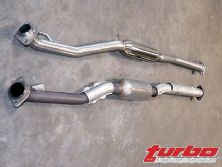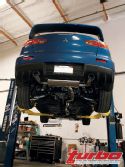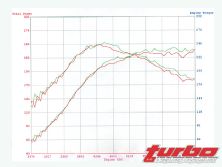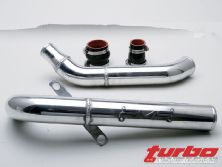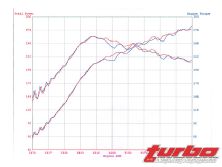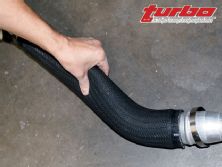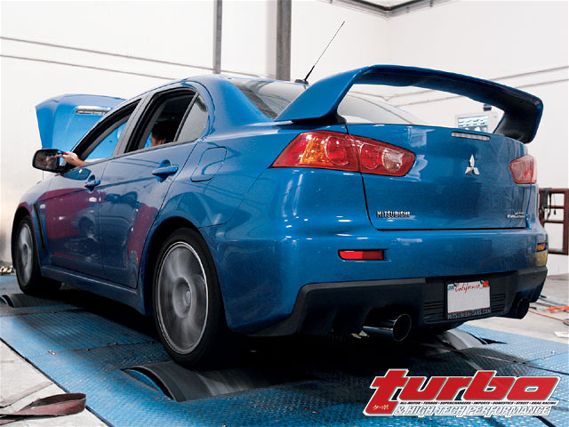 | 2008 Mitsubishi Evolution X - Power Check!
| 2008 Mitsubishi Evolution X - Power Check!
Pros
The Evo X made its debut to the general public in January. Designed with an all-new 4B11/T powerplant, the Evo X offers some promising performance results straight from the showroom to the track. The factory-rated 291 hp and 300 lb-ft of torque 2.0L mill was engineered to pump out an impressive 145.5 hp per liter displacement. The largest horsepower per liter in its class. Among numerous refinements and improvements from the previous 4G63 powerplant to the new 4B11 unit is the use of a MIVEC variable valve timing system used on both intake and exhaust camshafts, whereas its previous ancestor only used one.
Cons
The release of the new Evo X meant uncharted territory for those who were once familiar with the previous generation Mitsubishis. The factory ECM is one realm of uncertainty among many aftermarket performance tuners. We've even received word that Mitsubishi has kept their ECU schematics under lock and key even months after the car was released. While the tuning aspects remain a mystery, we can assume it's only a few months before a performance shop or brainiac engineer learns to unlock the ECM's code.
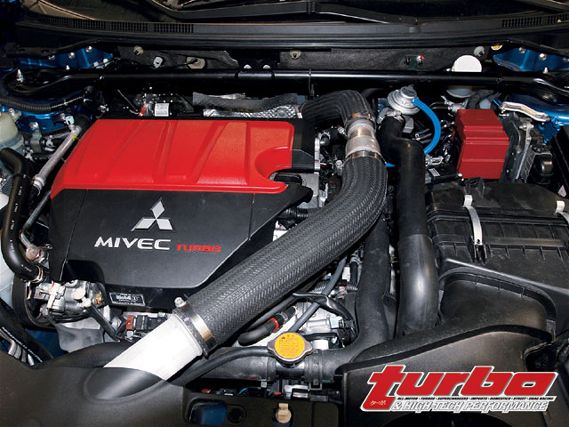 | Stock
| Stock
Dyno Test Results
Strapped to the dyno, we made a series of pulls to obtain a good baseline horsepower rating. At the Dynamic Autosports Mustang dyno, known by many to be one of the more stingier dynos in California, the car belted out 237 hp and 247 lb-ft of torque.
Product
Exhaust, mid-pipe, nuts and bolts, gaskets, stickers
Installation Time
60 minutes
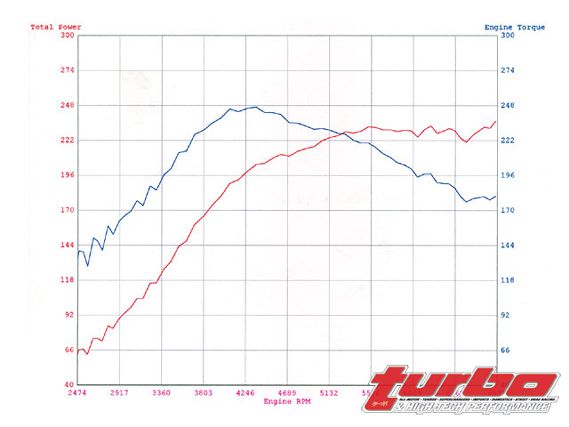 | Baseline Dyno Results
| Baseline Dyno Results
Pros
We were lucky enough to receive the new 5Zigen ZZ exhaust for our Evo X as it came fresh off the boat the day before our scheduled test date. The 5Zigen ZZ exhaust system consists of a SUS034 stainless steel canister and 100mm tip with an integrated silencer designed within the unit to keep decibels within legal limits for California usage. The B-pipe is comprised of a full stainless SUS436 and is 60.5mm in diameter. Along with some performance improvements, the ZZ exhaust has some visual appeal as well. The factory exhaust tip units were designed with a more oval appearance, while the 5Zigen ZZ setup was fabricated with the sportier round tips.
Cons
The 60.5mm B-pipe section was similar in size to the factory unit. 5Zigen specifically designed such a small main pipe diameter due to new Japan JASMA (government regulation) laws. Companies such as 5Zigen sell axel-back units with the B-pipe as an optional unit in Japan. While Japan's exhaust setup is sold in two separate pieces, the U.S. version is sold as a catback setup. 5Zigen also plans to release a 70.5mm single outlet unit as a race version within the next few months for the Evo X. Installation of the exhaust can be a pain in the ass if you attempt to tackle the project on your own. We suggest getting assistance from a friend or neighbor to help speed up the process. A can of WD40 comes a long way when finagling the rubber exhaust bushings off the old system and onto the new unit.
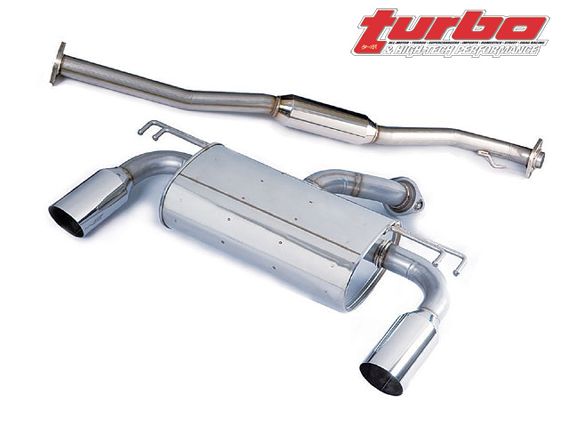 | 5Zigen ZZ Evo X Cat-Back Exhaust System
| 5Zigen ZZ Evo X Cat-Back Exhaust System
Dyno Test Results
The Evo X responded well to the new exhaust setup, as peak power and torque figures increased by 4 hp and 4 lb-ft of torque. Lower rpm figures remained consistent with stock dyno numbers but we noticed a change at 4,350 rpm with an increase of 7 hp and 6 lb-ft of torque. Both torque and horsepower numbers maintained a consistent range of 7 to 9 hp up until 4,810 rpm. An increase was present once again at 5,230 rpm as dyno charts show the largest margin in pickup of 11 hp and 10 lb-ft of torque at 6,200 rpm, and once gain at 6,620 rpm as we see a steady increase in numbers continue till redline.
Product
Intake, K&N air filter, crankcase breather hose, four-ply silicone couplers, silicone BOV return hose, hose clamps, stickers, and instructions
Installation Time
70 minutes
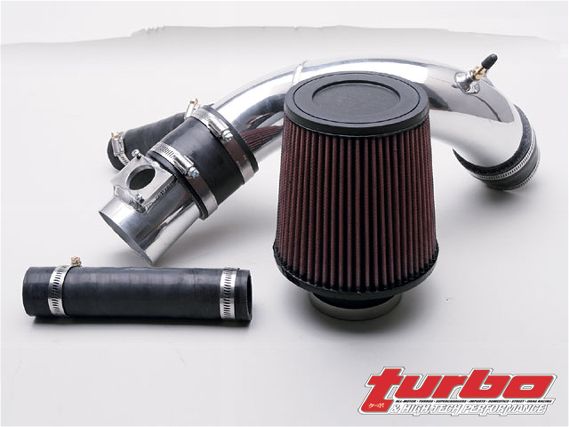 | AMS Evo X Performance Intake
| AMS Evo X Performance Intake
Pros
The factory intake on the Evo X comes with a snorkel in a modest attempt to ingest cold air but its performance is nowhere near as efficient as the new AMS Performance intake. AMS Performance has developed a 3-inch mandrel-bent aluminum intake system that not only improves the rather bland-looking engine bay of the Evo but has the performance numbers to back it up. Each end of the pipe has been bead rolled to eliminate silicone pressure blow-offs while a four-ply silicone coupler keeps the unit securely in place. The factory blow-off valve has been cleverly relocated and in-line with the air induction flow to minimize turbulence and maximize proper airflow. The new intake helps to lean out air/fuel to a safe level. We all know by now that previous model Evos and even the new ones come programmed excessively rich by Mitsubishi as a safety margin to minimize blown engines making their way back to the warranty department.
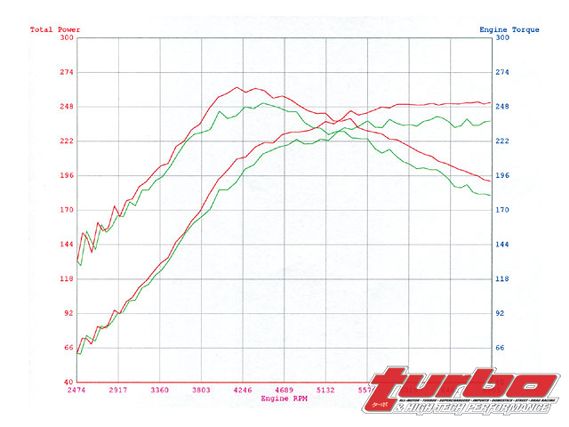 | Dyno with AMS Evo XPerformance Intake
| Dyno with AMS Evo XPerformance Intake+9HP and 12LB-FT of Torque
Cons
Removal of the factory intake requires the owner to either cool the car down or risk the chances of some serious burns, since the throttle body inlet clamp is located directly in the path of the turbo and manifold. The AMS Performance intake may require the installer to shoehorn the filter into the corner, but take precaution not to smash or bend the filter when attempting to install the new unit.
Dyno Test Results
The newly installed intake posted some impressive numbers like we expected. Before we performed our dyno run, we made sure to disconnect the factory ECM fuse and drive the car around the city to ensure the ECM has fully recalibrated to the new intake system. Dyno charts show an increase in power over our previous exhaust run by 9 hp and 12 lb-ft of torque. The intake showed gains across the board from 2,474 rpm to redline with the largest gains of 17 hp at 6,534 rpm, and 19 lb-ft of torque at 4,130 rpm.
Product
Boost controller, solenoid valve, fittings, vacuum hose, instructions, wires, connectors, brackets, stickers, nuts and bolts, hose clamps, wire ties, valve bracket
Installation Time
45 minutes
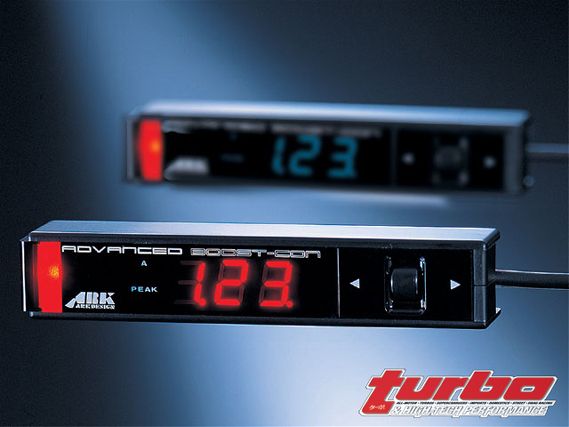 | Ark Design Advanced Boost Controller
| Ark Design Advanced Boost Controller
Pros
ARK Design Advanced boost controller implements a compact-designed unit with a built-in pressure sensor and quick-responding solenoid valve for accurate boost control. End users can pre-program the ARK boost controller with two levels of boost pressure along with an adjustable boost warning safety feature that flashes in white at the default pressure. A full-color display changes according to scaling boost pressure, and a peak hold display offers numerous settings available on the unit.
Cons
With any boost controller, improper installation or adjustments to increase boost can result in a damaged motor. If you're not competent enough to install or program the controller, we suggest going to a qualified speed shop to test and tune.
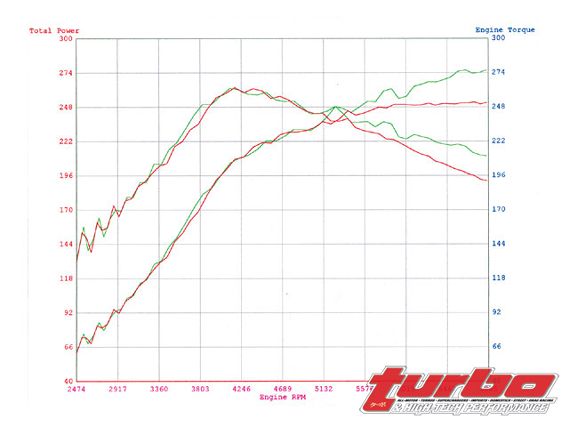 | Ark Design Advanced Boost Controller
| Ark Design Advanced Boost Controller+24HP and 20LB-FT of Torque
Dyno Test Results
Rather than using the boost controller to turn up the boost levels, we used the unit to help us maintain proper boost levels when climbing up the rpm needle. Upon testing the Evo X during our baseline runs, we found the factory turbo faltering at higher rpm when using the stock boost control solenoid. At 5,400 rpm the boost level was dropping dramatically from 21.7 to 10 psi when approaching 7,000 rpm. The loss in boost pressure was a serious concern for us when it came to producing ideal horsepower on the Evo X. After a few minutes of wiring up the new ARK boost controller, we were back in business and quickly set up the controller to a set 22 psi. The ARK boost controller was able to hold a more consistent pressure level, as boost never tapered bellow 15.9 psi throughout our entire run. The dyno charts graphed an obvious improvement from 5,390 rpm with a gain of 24 hp and 20 lb-ft of torque at 6,500 rpm.
Product
Hard pipe, connectors, four-ply silicone couplers, four-ply hump hose, new hose clamps, brackets, stickers, nuts and bolts, instructions
Installation Time
70 minutes
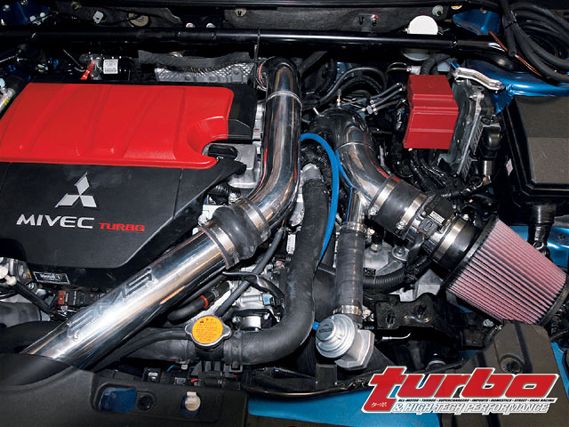 | 2008 Mitsubishi Evolution X - Power Check!
| 2008 Mitsubishi Evolution X - Power Check!
Pros
Comprised of a 2.5-inch mandrel-bent aluminum pipe, the AMS performance hot pipe is a simple-to-install piece that can reward your Evo with added horsepower. The factory Evo plumbing was designed by Mitsubishi as a cost effective way to interlink the inlet and outlet piping. Unfortunately, the soft rubber hose the factory provided is considered less than ideal for any performance vehicle. The soft rubber hose has a tendency to expand when under boost. This expansion causes an increase in air turbulence and deflection, which can cause a loss in both horsepower and torque. The AMS Evo X upper intercooler pipe was designed to flow more air than the stock unit using its 2- to 2.5-inch transition for maximum performance. Using the factory location core support strap, the AMS hot pipe can be installed by even the most amateur mechanic.
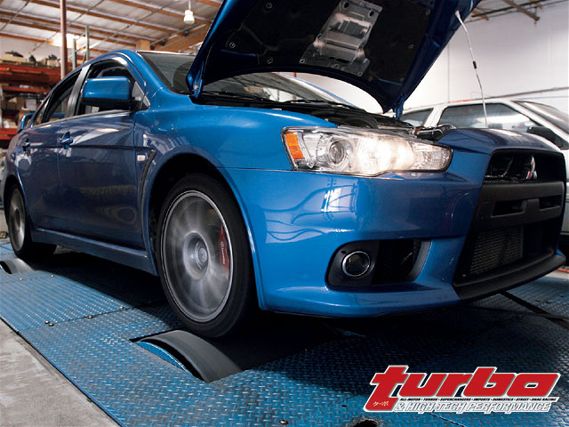 | 2008 Mitsubishi Evolution X - Power Check!
| 2008 Mitsubishi Evolution X - Power Check!
Cons
While installing the unit is a no-brainer, the larger-sized hot pipe diameter was a minor concern when attempting to reattach the factory radiator cover shroud. Although the hood clears without an issue, we suggest trimming the plastic to accommodate the new pipe.
Dyno Test Results
With the new hard pipe in place, the rollers were spun once again. We found an increase from 4,400 rpm to redline with the largest gains occurring at 4,730 rpm with an increase of 12 hp and 10 lb-ft of torque. As the boost level increased, the gains were obvious as a 5 to 9 hp and 4 to 8 lb-ft of torque margin was seen from 5,600 rpm to redline.
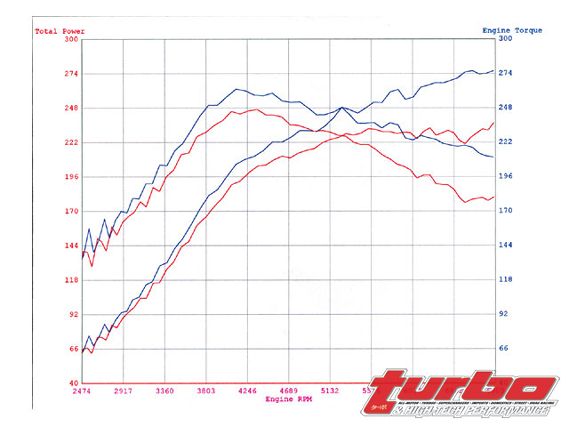 | Final Dyno Results
| Final Dyno Results+45HP and 17LB-FT of Torque
Conclusion
What began as a baseline dyno run of 237 hp and 247 lb-ft of torque was quickly revamped with our final run of 282 whp and 262 lb-ft of torque. A gain of 45 hp and 17 lb-ft of torque was established with some of the basic bolt-ons more commonly used on the street. Upon dyno testing the Evo X and the new 4B11, we barely touched the surface on the true potential of this motor. Stay tuned in the near future as we plan to take this engine to the next level.
Exhaust AMS
Performance
Intake ARK Design
Advanced Boost
Controller AMS
Performance
Hot Pipe Peak
Horsepower 237 @ 5,570 rpm 241 @ 6,390 rpm 252 @ 6,250 rpm 276 @ 6,894 rpm 282 @ 6,905 rpm Peak Torque 247 @ 4,330 rpm 251 @ 4,443 rpm 263 @ 4,210 rpm 262 @ 4,110 rpm 264 @ 4,115 rpm Average
Horsepower 178 183 191 194 194 Average Torque 199 203 213 217 217 Final Power
Gains Baseline +4 hp
+4 lb-ft of torque +11 hp
+12 lb-ft of
torque +24 hp
-1 lb-ft of torque +6 hp
+2 lb-ft of torque
Total Gains
+45 HP
+17 LB-FT Of Torque
Parts MSRP
5 Zigen Border
ZZ Cat-Back
Exhaust
$1,130
AMS
Performance
Intake
$285
AMS Upper
Intercooler
Pipe/Hot Pipe
$295
ARK Design
Advanced Boost
Controller
$390
Total MSRP $2,100
Dynamic Autosports
www.dynamicautosports.com
5Zigen USA
www.5zigenusa.com
AMS Performance
www.amsperformance.com
ARK Design
www.arkdesign.co.jp

